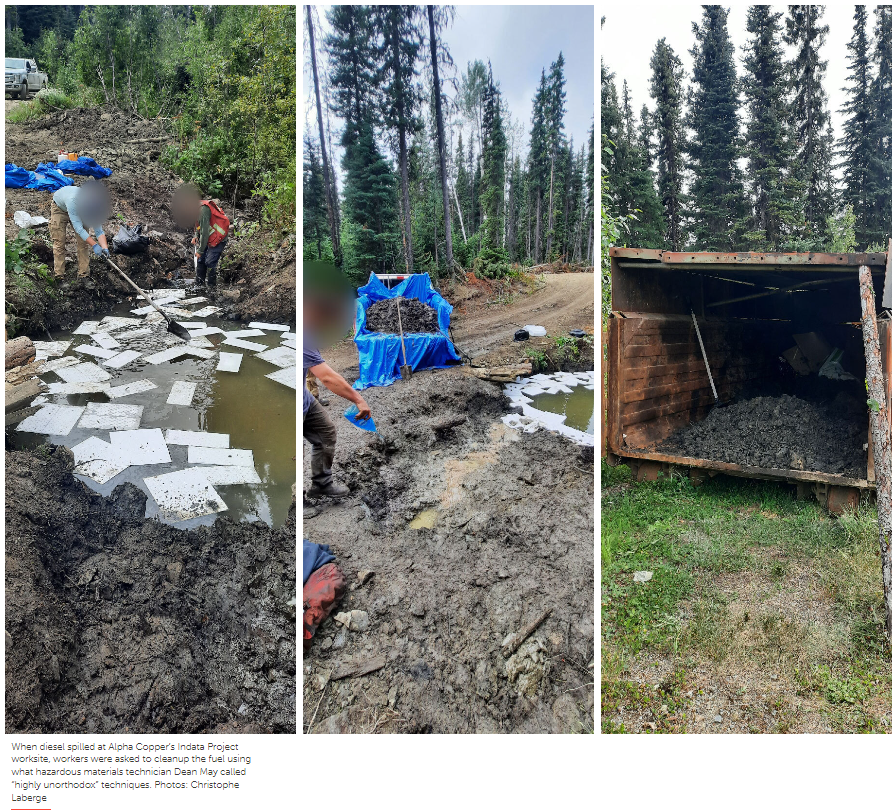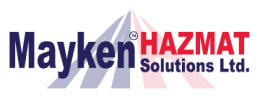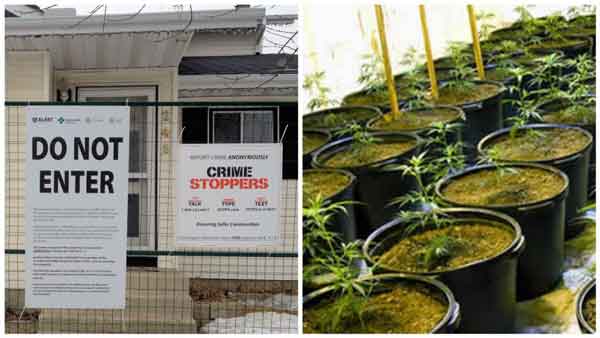Spills should not be taken lightly, Edzerza told The Narwhal. He worked with the B.C. First Nations Energy and Mining Council, which advocates on behalf of First Nations in B.C. with respect to mining and energy, for ten years.
If the spill was reportable, “the province needs to be involved to make sure that the cleanup is done in such a way that it minimizes environmental impacts to the land,” Edzerza, who left the council last February, said.
The regulatory regime depends on companies self-reporting, and when that information doesn’t get to the government, it’s a significant problem, Gavin Smith, a staff lawyer with West Coast Environmental Law told The Narwhal.
The Indata Project, led by Alpha Copper and Eastfield Resources Ltd, was originally staked by Imperial Metals Corp in 1983. It covers an area of 3,189 hectares and 16 mineral claims, which gives claim-holders the right to access an area for exploration and development. Some of the claims overlap Nation Lakes Provincial Park, as they were staked before the park was created. Approximately $2.6 million has been spent searching for valuable minerals on the property, according to a 2019 technical report. There are no reported spills at the Indata site on the province’s major spill incident list or compliance and enforcement database.
Laberge said he and a few other crew members were instructed to dig out the contaminated dirt and bury it in the forest, which Johnston confirmed. A “minor amount went into a small intermittent water flow that was used as the water source for the drill,” Johnston with Mincord Exploration Consultants said in an email.
“The contaminated dirt was removed to a dry location on the property where a pit was dug and the material covered in the Gator absorbent. As a further measure a containment tray was obtained and the pump placed within this to prevent a repeat,” Johnston added. Gator absorbent is advertised as an “all-natural, biodegradable absorbent” that can soak up to six times its weight in oil.

Johnston said the crew used absorbent pads to soak up the diesel that had spilled into the water and then burned the pads. “We cleaned it up. It isn’t a big deal,” Johnston told The Narwhal over the phone.
But digging a hole and filling it with contaminated soil, using dish soap and burning diesel-soaked pads are all “highly unorthodox” practices, Dean May, a hazardous materials technician told The Narwhal. “I can’t believe that whoever would be in charge of that site, whoever the jurisdiction is, would allow that.” Normally any contaminated material is transported to a facility to properly dispose of it, he added.
May, who is president of Mayken Hazmat Solutions based in Calgary, has been cleaning up spills for more than 25 years, dealing with everything from train derailments to truck accidents. “Small spills, large spills and everything in between,” he said.
Ensuring the proper authorities are notified is part of the cleanup process, May said. If a cleanup is not done properly, more damage can be done to the environment, May said.
While Laberge remembers the diesel entering a creek, Johnston said that would be “vastly overstating” the size of the watercourse.
Laberge and Johnston also disagree on how far the diesel travelled. The spill was monitored and “no petroleum reached the lake,” Johnston wrote. But Laberge is certain diesel reached the lake. A few days after the spill, he said he had a soil sample line that took him right to the lake’s shore, where he saw diesel on the edge of the water. In some spots, he said, he could smell it.
When asked about the decision to not report the spill Johnston, who confirmed he was the manager at the time, responded, “it was more important to clean it up.” Eastfield Resources did not respond to specific questions but provided a statement saying the company takes “our environmental and social responsibility very seriously.”
Lawyer Gavin Smith did not comment on the specifics of this incident but said, “for something like a diesel spill into a water body, which is a legally required thing to report, there should be significant follow up from B.C. on that.”
Kendra Johnston, president and CEO of The Association for Mineral Exploration, which represents over 5,000 members working in mineral exploration in B.C. and around the world, told The Narwhal spills are infrequent and most are under two litres. “They are cleaned up quickly and effectively with spill kits,” Johnston said in an email.
Spill kits typically contain things like personal protective equipment, absorbent materials, shovels and containment drums, according to the Prospectors and Developers Association of Canada’s spill management guidelines. They do not contain detergent or soap.
Under the Environmental Management Act if a reportable spill happens, a call must be made immediately to Emergency Management BC. It needs to know when and where the spill happened, what was spilled and what other agencies and First Nation governments have been advised. A follow-up report is also supposed to be submitted to the Ministry of Environment and Climate Change Strategy with more details about the cause and possible adverse effects of the spill to human health or the environment.
None of this happened at the Indata Project site in August.
Read the whole article from The Narwhal here!






















